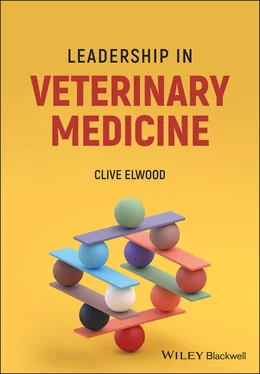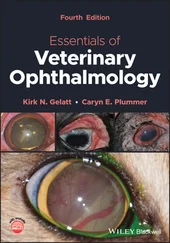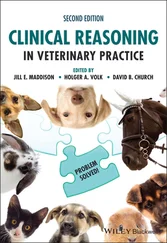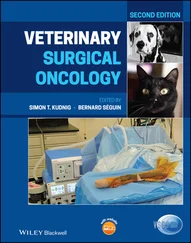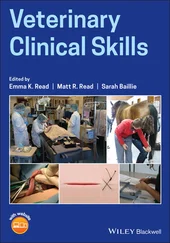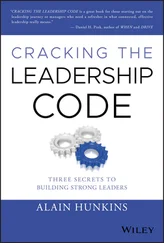Clive Elwood - Leadership in Veterinary Medicine
Здесь есть возможность читать онлайн «Clive Elwood - Leadership in Veterinary Medicine» — ознакомительный отрывок электронной книги совершенно бесплатно, а после прочтения отрывка купить полную версию. В некоторых случаях можно слушать аудио, скачать через торрент в формате fb2 и присутствует краткое содержание. Жанр: unrecognised, на английском языке. Описание произведения, (предисловие) а так же отзывы посетителей доступны на портале библиотеки ЛибКат.
- Название:Leadership in Veterinary Medicine
- Автор:
- Жанр:
- Год:неизвестен
- ISBN:нет данных
- Рейтинг книги:4 / 5. Голосов: 1
-
Избранное:Добавить в избранное
- Отзывы:
-
Ваша оценка:
- 80
- 1
- 2
- 3
- 4
- 5
Leadership in Veterinary Medicine: краткое содержание, описание и аннотация
Предлагаем к чтению аннотацию, описание, краткое содержание или предисловие (зависит от того, что написал сам автор книги «Leadership in Veterinary Medicine»). Если вы не нашли необходимую информацию о книге — напишите в комментариях, мы постараемся отыскать её.
Leadership in Veterinary Medicine
Leadership in Veterinary Medicine
Leadership in Veterinary Medicine — читать онлайн ознакомительный отрывок
Ниже представлен текст книги, разбитый по страницам. Система сохранения места последней прочитанной страницы, позволяет с удобством читать онлайн бесплатно книгу «Leadership in Veterinary Medicine», без необходимости каждый раз заново искать на чём Вы остановились. Поставьте закладку, и сможете в любой момент перейти на страницу, на которой закончили чтение.
Интервал:
Закладка:
2.2.4 Chaotic
This is the realm of the turbulent, fast‐moving, and unknowable, where relationships are in constant flux. Only acting on this system and reducing some of the fluctuation can bring them into a more manageable and complex state (Snowden and Boone 2007).
2.2.5 Wicked problems
Wicked problems have the following characteristics (Periyakoil 2007; Cleland et al. 2018):
They are complex and unique.
They have innumerable causes associated with multiple, and shifting, social, cultural, and political environments.
Participants have different interpretations of the same issue, unpredictable behaviour, and a lack of agreement on desirable outcomes.
They are difficult to define and resolve and do not lend themselves to the traditional linear mode of problem solving.
The intricacies of understanding are typically retrospective.
Cause and effect, typically, are ‘distant in time and space’.
Solutions are not ‘right’ or ‘wrong’ but ‘good’ or ‘bad’.
A solution that simplifies the issue can move the problem elsewhere.
They cannot be managed without politics.
The Review Committee had the unenviable task of re‐designing the process for selecting the ‘best’ veterinary students. The representatives came from general and specialist practice, industry, charities, and academia, and all had a view of what was needed now. Some wanted the most academically able, and they all agreed that personal and relational characteristics were essential. They also recognised the need for a diverse intake. They knew that the decisions they made now would play out over the course of the next 30 years, and that the world would change over that time in ways they could not predict. A wicked problem, and a thankless task, indeed.
Contextualising the veterinary professions as sitting as part of complex, open, adaptive/responsive system and where many problems are wicked without ‘perfect solutions’ informs the approach to managing the realities, and challenges, of leadership in veterinary medicine.
2.3 What Is a Profession?
The early professions such as medicine and law arose as learned activities in the late Middle Ages and formal professions developed to allow a monopoly over a domain of practise (Adler et al. 2008). Generally speaking, professions are knowledge and/or skill‐based; entry is certified, e.g. by examination, and professional competencies must be maintained. This monopoly gives a right to charge for service and prohibits ‘lay’ persons from practising. With professional status comes an identity that develops before and after training, and a professional community to which we belong. Historically, professional membership has come with a high degree of trust and, generally, professions have been self‐regulating (this has, arguably, diluted as trust in the professions has diminished) and set their own standards of practise.
Morrell (2016) citing Lord Benson in a House of Lords debate in 1992, offers a list of the distinguishing characteristics of a profession:
Ensures fair and open competition, directs the behaviour of its members, sets adequate standards of entry‐level education and continuing competence
Sets ethical rules and professional standards that are higher than those established by the general law and are designed for the benefit of the public and not for private advantage.
Has a membership that is independent in thought and outlook but subordinates its private interests in favour of support for the governing body and observes its rules and standards.
Has disciplinary standards if its rules are not observed, or in the event of bad work.
Provides leadership.
At an institutional level, has an obligation to develop and disseminate a genuine body of knowledge and, at individual level, has the requirement to exercise judgement.
2.4 The History of the Veterinary Profession
Knowledge leadership in veterinary medicine can be traced centuries back, such as through the production of treatise in China c. 2500 BCE. Formally, the veterinary profession was begun through the leadership of Claude Bourgelat who founded Lyon Veterinary School and Alfort School in 1765. This was followed by establishment of the ‘London Veterinary College’ by Charles Vial de St. Bel (a graduate of Lyon) in 1791. The development of veterinary nursing as an independent profession in the United Kingdom continues with milestones such as with the first veterinary nurse to sit on Royal College of Veterinary Surgeons (RCVS) Council and, in 2012, development of a new Code of Professional Conduct including, for the first time, a declaration to be made by Registered Veterinary Nurses on professional registration.
Interactions between humans and animals are complex and multilayered (ranging from practical to psycho‐social to transpersonal) and are the subject of deep interest, study, and debate (Haraway 2008). Humans use, and relate to, animals in multiple ways, to provide food, security, research subjects, transport, assistance, objects of veneration and worship, companionship, and sources of profit. As companions, pets remind us to be joyful and mindful, they bring life (and death) into a home, take us out of ourselves and provide reasons for living. What a responsibility that places on veterinary professionals! On a prosaic level, we can see that the motivational drivers and ‘purpose’ of the veterinary professions have developed and diversified over time from care of farm animals, to care of military animals, through to support of animal health and production, welfare and use of animals in medical research, to leisure and pet care. The picture of the profession (including practice type, gender balance, ownership structures and governance) is continually changing with societal needs and expectations. The profession is embedded in society and serves many different functions, including being a source of ‘entertainment’ through books, TV shows, and even stadium tours ( Figure 2.1).

Figure 2.1 The veterinary sector sits within and in relation to society; it is a complex, open, and adaptive/responsive system.
Throughout the history of the veterinary professions, globally, there are examples of great achievements that have impacted human society, e.g. the eradication of Rinderpest. Achievements in other areas, e.g. food production (breeding, animal health), drug development, nutrition, and medical research can be readily identified. More recently, the veterinary profession's role in global One Health is gaining prominence and recognition (Gibbs 2014; Natterson‐Horowitz 2015).
2.5 What Are the Veterinary Professions, and What Are They for?
To be a veterinary surgeon (veterinarian) or veterinary nurse (in the UK) is to be part of a profession and accept the authority and oversight of a professional regulator. In the United Kingdom, the regulator is the RCVS and the underlying legal status of the profession is the Veterinary Surgeons Act (1966). Much of this Act relates to how individuals are entered into, and maintained on, the Register of practitioners. What the registered professional can actually do is much less proscribed; the Act does say it is unlawful for anyone other than a veterinary surgeon to perform acts of veterinary surgery, whether or not they charge a fee (but the right to charge a fee for services is implicit). The RCVS also maintains a Register of Veterinary Nurses qualified to provide supporting nursing care to animals and, under veterinary direction, to undertake certain treatments and procedures that are also controlled by law under the Veterinary Surgeons Act 1966.
Читать дальшеИнтервал:
Закладка:
Похожие книги на «Leadership in Veterinary Medicine»
Представляем Вашему вниманию похожие книги на «Leadership in Veterinary Medicine» списком для выбора. Мы отобрали схожую по названию и смыслу литературу в надежде предоставить читателям больше вариантов отыскать новые, интересные, ещё непрочитанные произведения.
Обсуждение, отзывы о книге «Leadership in Veterinary Medicine» и просто собственные мнения читателей. Оставьте ваши комментарии, напишите, что Вы думаете о произведении, его смысле или главных героях. Укажите что конкретно понравилось, а что нет, и почему Вы так считаете.
